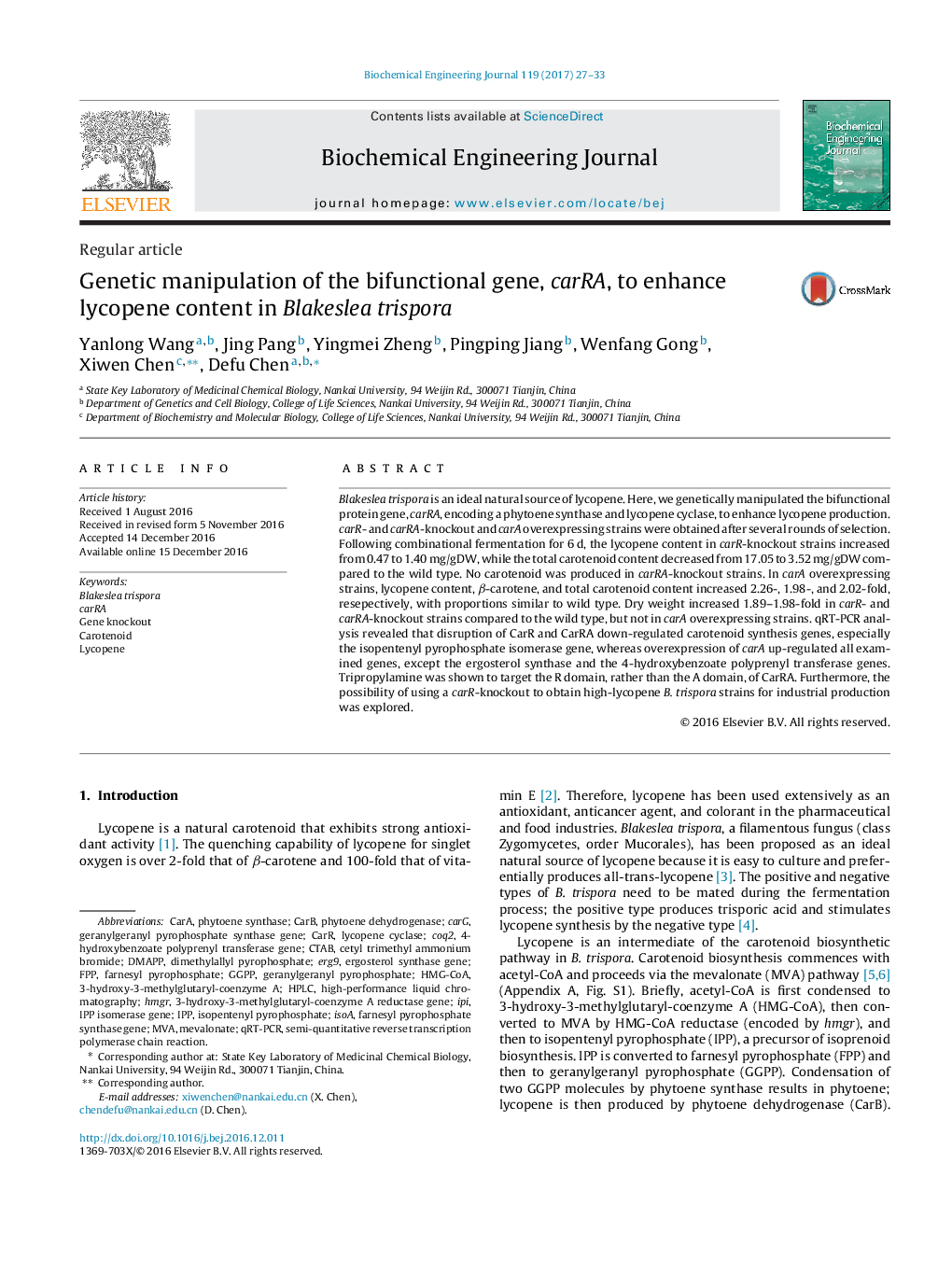| Article ID | Journal | Published Year | Pages | File Type |
|---|---|---|---|---|
| 6450412 | Biochemical Engineering Journal | 2017 | 7 Pages |
â¢Manipulation of carRA in B. trispora was conducted using gene targeting technology.â¢Disruption of carR enhanced the lycopene but decreased total carotenoid content.â¢Overexpression of carA increased the lycopene and the total carotenoid content.â¢The target of tripropylamine is the R domain, rather than the A domain, of CarRA.
Blakeslea trispora is an ideal natural source of lycopene. Here, we genetically manipulated the bifunctional protein gene, carRA, encoding a phytoene synthase and lycopene cyclase, to enhance lycopene production. carR- and carRA-knockout and carA overexpressing strains were obtained after several rounds of selection. Following combinational fermentation for 6 d, the lycopene content in carR-knockout strains increased from 0.47 to 1.40 mg/gDW, while the total carotenoid content decreased from 17.05 to 3.52 mg/gDW compared to the wild type. No carotenoid was produced in carRA-knockout strains. In carA overexpressing strains, lycopene content, β-carotene, and total carotenoid content increased 2.26-, 1.98-, and 2.02-fold, resepectively, with proportions similar to wild type. Dry weight increased 1.89-1.98-fold in carR- and carRA-knockout strains compared to the wild type, but not in carA overexpressing strains. qRT-PCR analysis revealed that disruption of CarR and CarRA down-regulated carotenoid synthesis genes, especially the isopentenyl pyrophosphate isomerase gene, whereas overexpression of carA up-regulated all examined genes, except the ergosterol synthase and the 4-hydroxybenzoate polyprenyl transferase genes. Tripropylamine was shown to target the R domain, rather than the A domain, of CarRA. Furthermore, the possibility of using a carR-knockout to obtain high-lycopene B. trispora strains for industrial production was explored.
